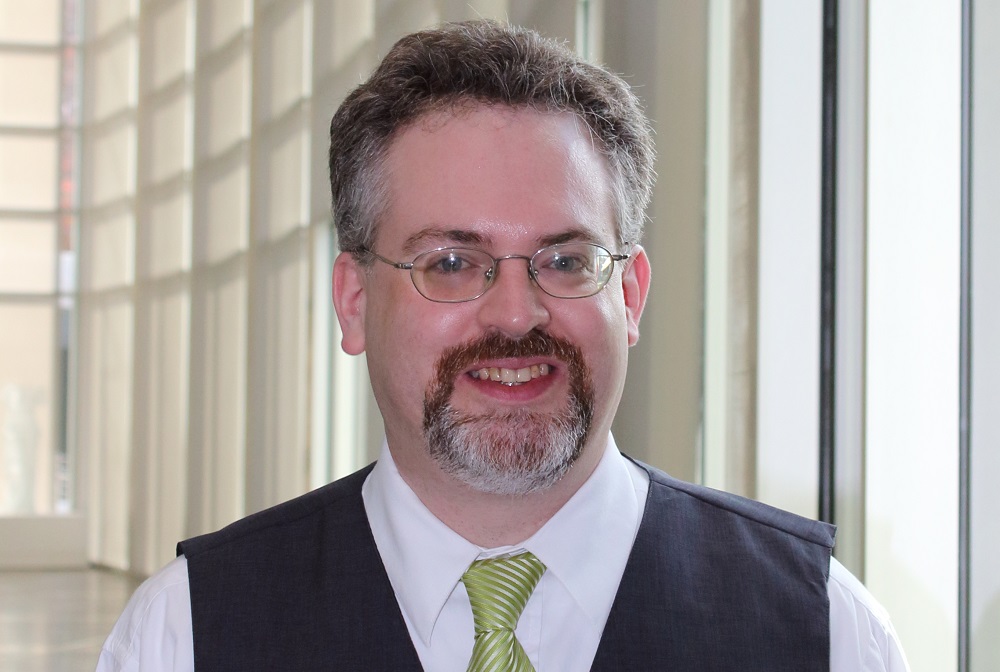Justin Elwood has been on the Protection Services team at Crystal Bridges for a couple of years, but is new to the museum’s blog. I’m pleased to have him on board, because he really has stories to tell from the “front lines” of the museum. He has been helpful in answering questions about which artworks seem to be favorites–and least favorites–among our visitors, what questions get asked most frequently, and how guests are reacting to new exhibitions or installations. In today’s blog, Justin provides some insights into one of the most visible, but least vocal, members of the museum staff. –LD
Over the past nearly two years, it has been my honor to be a Protection Specialist at Crystal Bridges Museum of American Art. What is a Protection Specialist, one might ask? Simply put, I am a security guard whose duties entail protection of guest safety and art alike, as well as fielding any questions from guests, which, I can assure the reader, have a wide-ranging expanse. The purpose of this article is to acclimate readers of this blog to what we Protection Specialists do on a daily basis, and the situations we encounter during the course of the work day at the museum. This article may well lead to other articles on this topic, and it is my hope that the reader will find him- or herself informed as well as entertained after reading them.

A Protection Specialist on duty in the 1940s to Now Gallery at Crystal Bridges
Since my hiring by Crystal Bridges in October 2015, I have had the opportunity to interact with thousands of guests with a wide range of ages, races, ethnicities, and nationalities. Knowledge-level of guests is, of course, all over the map as well. One interesting and completely understandable misconception I have heard from many guests is that we are “docents.” The definition of a museum docent (per Wikipedia) is one who is an educator or guide for his or her institution, usually on a volunteer basis, and who undergoes an intensive training process that may involve reading lists prior to getting to lead guided tours. While what we do in some ways parallels what museum docents do, we are a curious hybrid, in that we are part security guards, part museum information stations. Crystal Bridges does, of course, have hundreds of volunteers for whom we are very thankful, and it is the job of some of these volunteers to serve as tour guides through the galleries and museum in general. These people receive the more intensive art training that a docent would in other institutions, whereas the job of the Protection Specialist, in addition to the protection aspect, is to answer more generalized inquiries from guests, regarding way-finding especially, but often, more specific questions about the works of art on view. Our knowledge-level about the also art ranges greatly from employee to employee, especially since most of our training is facilitated from a security point of view; we bring our own life experience and education to the table and are welcome to study art and art history on our own time for the most part, though we receive some information sessions to familiarize ourselves with temporary exhibitions and some objects in the permanent collection. Also, we are paid staff of the museum; that is, we do not serve as volunteers.

A Protection Specialist answers a guest’s questions in the Early Nineteenth-Century Gallery at Crystal Bridges
The different hats we as Protection Specialists wear are apparent in our daily roles at the museum: often, we will at one turn have to gently remind one guest not to touch a painting, and at another turn answer a question from another guest on the composition of a painting. Thus, we must be the “you can’t do this, you can’t do that” enforcer on the one hand, and on the other the explainer and facilitator for the guest. Also, if a reader of this blog has visited Crystal Bridges as a guest, he or she has noticed us Specialists no doubt throughout the museum in our white shirts, gray vests, and black pants and shoes. To some, we seem to appear intimidating, as I have several times heard the comment from a guest, “Wow, they are all over the place here,” but I can assure the reader, we are there to help as well as protect. Please, approach one of us next time you visit the museum; some of us are more verbose than others, but we are all there for a common goal: we love this institution and we love art. Thank you for helping us build our young museum—you do so simply by being here.
*Portions of information were collected from Wikipedia.




